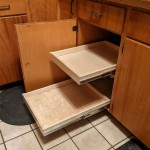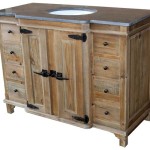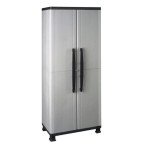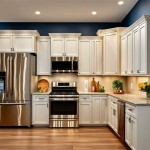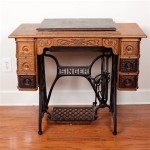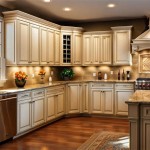Optimizing Kitchen Cabinet Space for Pots and Pans Storage
Efficient storage solutions are critical for maintaining an organized and functional kitchen. Pots and pans, often bulky and irregularly shaped, present a significant challenge in kitchen storage. Strategic planning and implementation of appropriate storage methods can maximize cabinet space, improve accessibility, and prolong the lifespan of cookware.
The spatial efficiency of a kitchen directly impacts its usability. Cramped or disorganized storage areas can lead to frustration, wasted time, and potential damage to cookware. Properly storing pots and pans ensures that they are readily available when needed, protects them from scratches and dents, and contributes to an overall sense of order within the kitchen environment.
This article explores various strategies and solutions for optimizing kitchen cabinet space dedicated to pots and pans storage, focusing on organization techniques, space-saving products, and considerations for different kitchen layouts.
Assessing Inventory and Decluttering
Before reorganizing kitchen cabinets, a thorough assessment of existing cookware is essential. This involves identifying which pots and pans are frequently used, occasionally used, and rarely or never used. Items that are rarely used or duplicates of existing cookware should be considered for donation or disposal.
The process of decluttering allows for a more realistic evaluation of storage needs. Removing unnecessary items frees up valuable cabinet space and simplifies the organization process. It is recommended to conduct this assessment periodically, as cookware preferences and cooking habits may change over time.
When deciding what to keep, consider the functionality and condition of each item. Pots and pans with significant damage, such as warped bottoms or heavily scratched non-stick surfaces, may no longer be suitable for cooking and should be discarded. Keeping only essential and well-maintained cookware will contribute to a more efficient and organized kitchen.
Consider consolidating sets of cookware. If the original set is incomplete or individual pieces are rarely used, it may be more efficient to store only the most frequently used items. This can significantly reduce the overall storage footprint.
Implementing Vertical Storage Solutions
Vertical storage utilizes the height of cabinets, maximizing the available space. Stacking pots and pans is a common practice, but without proper organization, this can lead to instability and difficulty accessing specific items. Implementing vertical dividers or pot racks can mitigate these issues.
Pot racks, either installed inside cabinets or mounted on walls or ceilings, provide individual storage for each pot and pan. This eliminates the need for stacking and allows for easy access to any item without disturbing others. Wall-mounted pot racks can also serve as a decorative element in the kitchen.
Adjustable dividers and organizers are another effective vertical storage solution. These dividers can be customized to fit the specific dimensions of pots and pans, creating individual compartments within the cabinet. This prevents items from shifting or toppling over when the cabinet is opened or closed.
Tiered shelves are also a valuable option for vertical storage. These shelves create multiple levels within a single cabinet, allowing for more efficient use of space. Pots and pans can be arranged on different tiers based on size and frequency of use, improving accessibility and organization.
Roll-out shelves offer a dynamic vertical storage solution. These shelves slide out from the cabinet, providing full visibility and access to the contents. This is particularly useful for deep cabinets where items at the back may be difficult to reach.
Optimizing Cabinet Layout and Configuration
The layout and configuration of kitchen cabinets can significantly impact the efficiency of pot and pan storage. Consider the proximity of cabinets to the stovetop or oven. Storing frequently used cookware in close proximity to the cooking area can streamline the cooking process.
Deep drawers are often better suited for storing pots and pans than traditional cabinets. The increased depth allows for more efficient stacking and organization. Drawer dividers can be used to create individual compartments within the drawer, preventing items from shifting and making it easier to locate specific items.
Corner cabinets can be a challenging space to utilize effectively. However, specialized corner cabinet organizers, such as lazy susans or pull-out shelving systems, can maximize the available space and improve accessibility. These organizers allow for easy access to items stored in the back of the corner cabinet.
Consider installing adjustable shelves within cabinets. This allows you to customize the height of the shelves to accommodate different sizes of pots and pans. This flexibility can significantly improve the efficiency of storage.
Utilize door-mounted racks for storing pot lids. This keeps lids organized and prevents them from cluttering up cabinet space. Door-mounted racks are available in various sizes and configurations to suit different lid sizes and cabinet door dimensions.
For kitchens with limited cabinet space, explore alternative storage options, such as hanging pot racks or freestanding storage units. These options can provide additional storage without requiring extensive renovations.
Selecting Appropriate Storage Accessories
A wide range of storage accessories are available to further enhance the organization of pots and pans. These accessories include pot lid organizers, pan protectors, and stacking organizers. Selecting the right accessories can significantly improve the efficiency and accessibility of storage.
Pot lid organizers are designed to keep lids neatly organized and prevent them from getting lost or damaged. These organizers come in various styles, including in-cabinet organizers, door-mounted organizers, and freestanding organizers. Choosing the right type of organizer depends on the available space and personal preferences.
Pan protectors are designed to prevent scratches and dents when stacking pots and pans. These protectors are typically made of felt or silicone and are placed between each pan to provide a protective layer. Using pan protectors can significantly prolong the lifespan of cookware.
Stacking organizers are designed to create individual shelves within a cabinet, allowing for more efficient stacking of pots and pans. These organizers are typically made of metal or plastic and are adjustable to accommodate different sizes of cookware.
Consider using hooks to hang pots and pans from the underside of shelves. This can free up valuable cabinet space and provide easy access to frequently used cookware.
Labeling shelves or drawers can also improve organization. This helps to quickly identify the location of specific pots and pans, saving time and effort.
Maintaining Organization and Preventing Clutter
Once an efficient storage system has been established, maintaining organization is crucial. Regularly decluttering and reorganizing cabinets can prevent clutter from accumulating and ensure that the storage system remains effective.
Implement a "one in, one out" rule. When a new pot or pan is acquired, consider donating or discarding an existing item to prevent overcrowding. This helps to maintain a manageable inventory of cookware.
Periodically reassess the organization system and make adjustments as needed. As cooking habits and cookware preferences change, the storage system may need to be modified to reflect these changes.
Encourage all members of the household to adhere to the established organization system. This ensures that items are consistently returned to their designated locations, preventing clutter and maintaining order.
Clean pots and pans thoroughly before storing them. This prevents food residue from accumulating and attracting pests. It also helps to maintain the cleanliness and hygiene of the storage area.
Consider investing in high-quality cookware that is durable and long-lasting. This can reduce the need for frequent replacements and minimize clutter.
By implementing these strategies, homeowners can effectively optimize kitchen cabinet space for pots and pans storage, creating a more organized, efficient, and functional kitchen environment.

Top 5 Recommended Kitchen Cabinets For Organizing Pots Pans

Thomasville Organization Pots And Pans Organizer

Storage Ideas For How To Organize Pots And Pans Kraftmaid

Kitchen Storage Cabinets The Best Pot Rack And Cabinet Organizers

Diamond At Lowes Organization Base Pots And Pans Pullout

Top 5 Recommended Kitchen Cabinets For Organizing Pots Pans

Base Pots And Pans Organizer Organization Kemper Cabinets

Hampton Bay Shaker Dove Gray Stock Assembled Pots And Pans Drawer Base Kitchen Cabinet 36 In X 34 5 24 Kdb36 Sdv The Home

Diamond At Lowes Organization Base Pots And Pans Organizer

Accessorize Your Cabinets Top Drawer Organizers That Take Care Of Pots And Pans Seigles Cabinet Center


